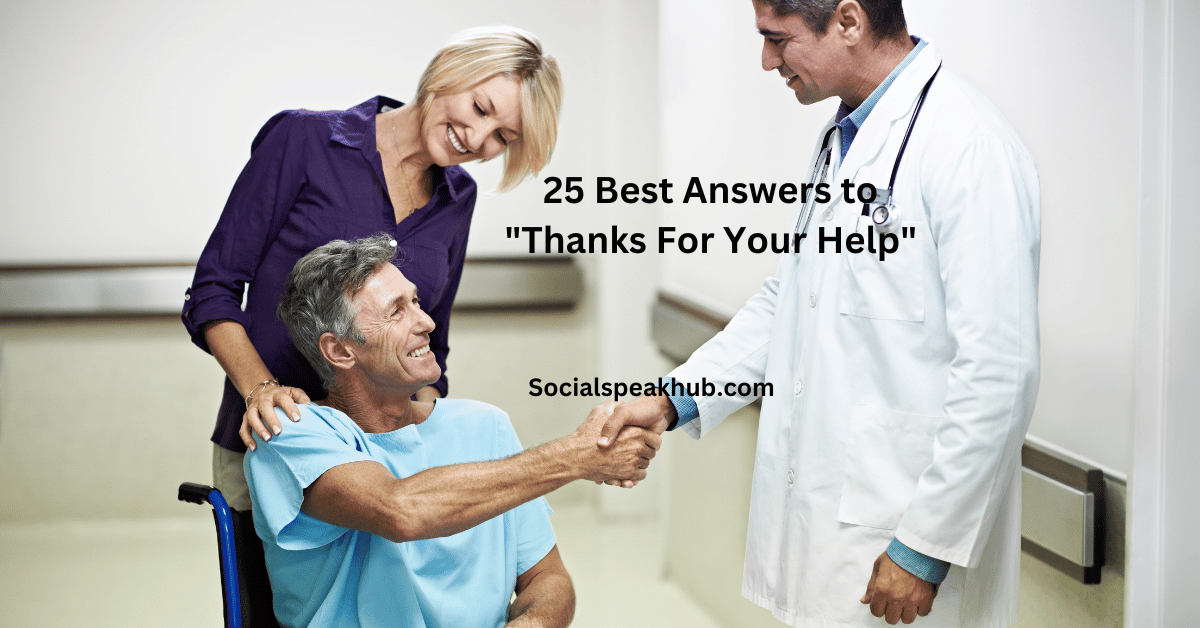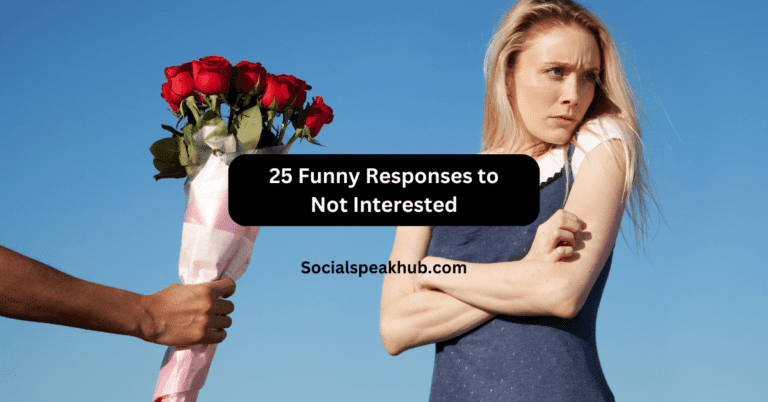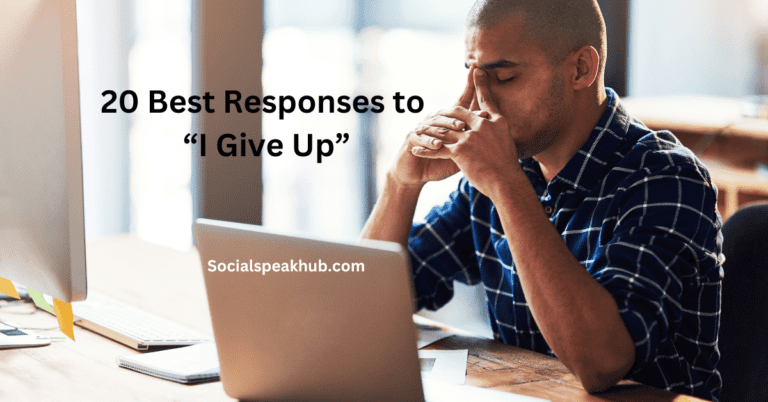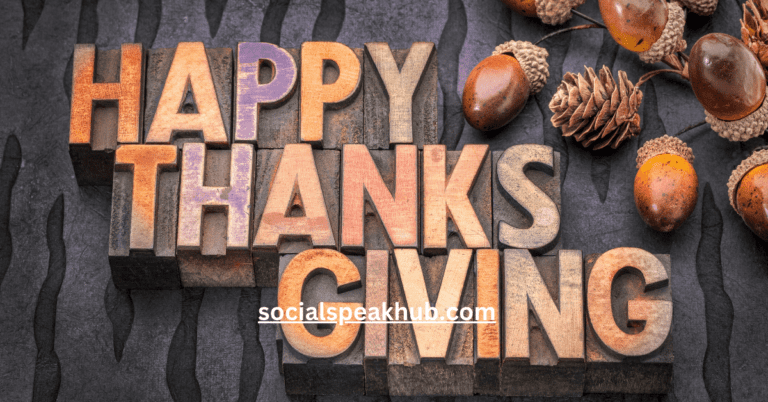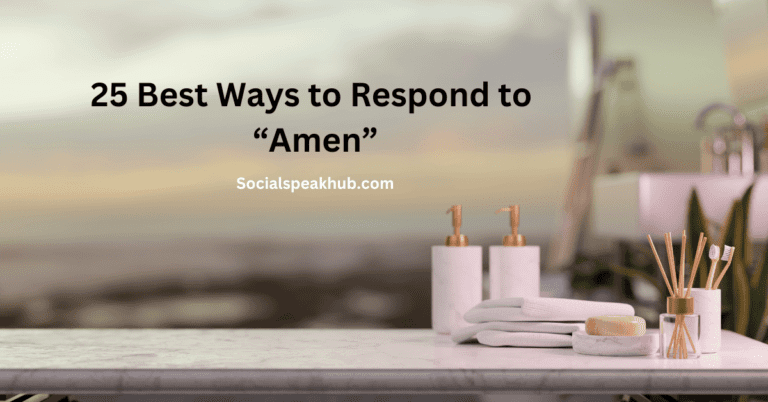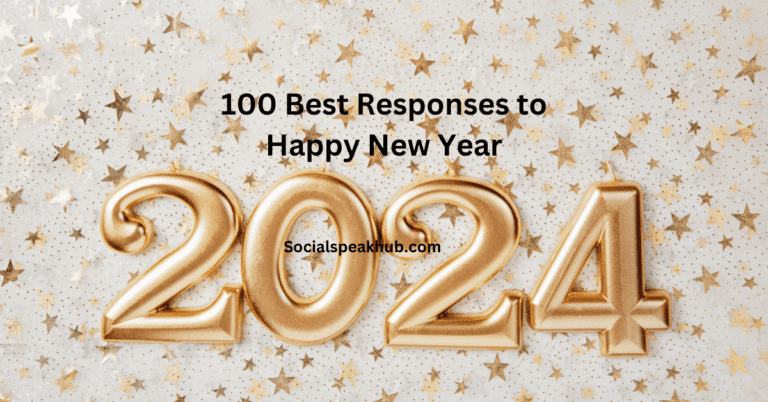25 Best Answers to “Thanks For Your Help”
In a world where courtesy and politeness matter more than ever, responding appropriately to expressions of gratitude is a skill worth honing. Whether you’re communicating with colleagues, friends, or clients, having a repertoire of gracious responses is essential. In this article, we’ll explore the 25 best answers to “Thanks For Your Help,” offering a variety of ways to express your appreciation in a manner that not only maintains professionalism but also adds a personal touch.
Table of Contents
25 Best Answers to “Thanks For Your Help“
- You’re welcome!
- Anytime!
- It was my pleasure.
- Happy to help!
- No problem at all.
- Glad I could assist.
- You got it!
- Not a problem.
- Always here for you.
- My pleasure!
- No trouble whatsoever.
- It’s what I’m here for.
- I’m glad I could be of service.
- Don’t mention it.
- I’m always happy to help.
- It was nothing.
- No need to thank me.
- I’m at your service.
- I’m glad I could make a difference.
- It’s all good!
- I’m here whenever you need support.
- It’s no big deal.
- You’re very welcome.
- I’m glad I could assist you.
- It’s my pleasure to help out.
1. You’re welcome!
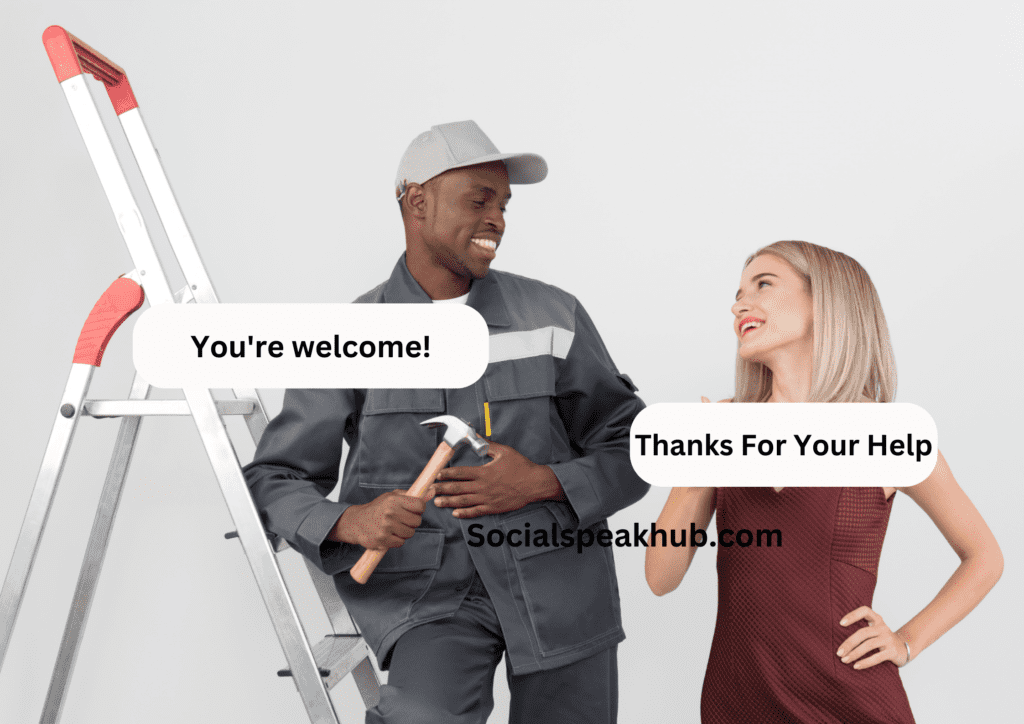
“You’re welcome!” is a timeless and straightforward response that shows kindness and a willingness to assist. It’s a simple way of saying that helping was a natural and pleasant thing to do. This phrase is often used when someone expresses gratitude for your assistance. It lets the other person know that you were happy to help and encourages a positive interaction. Overall, it’s a friendly and polite way to acknowledge thanks.
2. Anytime!
“Anytime!” is a laid-back but genuine way to let someone know that you’re always available to help. This response suggests a continuous willingness to assist in the future, creating an open and supportive atmosphere. It conveys a sense of reliability and friendship, indicating that the person can reach out for help whenever needed. It’s a friendly and approachable response that reinforces the idea that helping out is not a one-time offer but an ongoing offer of support.
3. It was my pleasure.
“It was my pleasure” adds a touch of joy to your response, conveying that assisting was not just a duty but something you found enjoyable. This phrase suggests that you took pleasure in helping, creating a positive and friendly atmosphere. It indicates that the act of assisting brought you satisfaction and that you were happy to be of service. Overall, it adds a personal and warm touch to the acknowledgment of thanks, emphasizing the positive experience you had while providing help.
4. Happy to help!
“Happy to help!” radiates positivity by expressing that providing assistance brought you joy. This response goes beyond a mere acknowledgment and indicates that your willingness to help stems from a genuine sense of happiness. It creates a warm and friendly atmosphere, letting the other person know that their request for help not only was met but contributed to your own sense of satisfaction. Overall, “Happy to help!” adds a cheerful tone to the exchange, highlighting the positive feelings associated with the act of assisting.
5. No problem at all.
“No problem at all” is a reassuring response that communicates to the person expressing gratitude that helping them was not an inconvenience. It emphasizes that the assistance provided was given willingly and without any difficulty on your part. This phrase aims to alleviate any concerns the other person might have had about imposing or causing inconvenience. It reflects a calm and easygoing attitude, making it clear that you were more than happy to offer your help.
6. Glad I could assist.

“Glad I could assist” communicates a sense of satisfaction and fulfillment in being able to help. This response goes beyond a simple acknowledgment, expressing your happiness at the opportunity to provide support. It conveys a genuine sense of joy in assisting, letting the other person know that their request was not only met but contributed to your own sense of accomplishment. Overall, it reflects a positive and willing attitude, emphasizing that you found value in being able to lend a hand.
7. You got it!
“You got it!” communicates a strong sense of capability and reliability in your response. It conveys confidence and assurance that the assistance requested has been taken care of or will be handled with competence. This phrase suggests that you are capable and ready to fulfill the task, instilling a sense of trust in the person expressing gratitude. It’s a concise and confident way of acknowledging their thanks while emphasizing your readiness to meet their needs.
8. Not a problem.
“Not a problem” is another reassuring response that communicates to the person expressing gratitude that helping them was effortless and posed no difficulty. It’s a casual way of saying that their request did not create any inconvenience and that you were more than willing to assist. This phrase aims to ease any concerns the other person might have had about causing trouble or disruption. It reflects a laid-back and accommodating attitude, emphasizing that providing help was easy and not a burden.
9. Always here for you.
“Always here for you” creates a strong sense of ongoing support, fostering a reliable and dependable connection. This response goes beyond a one-time acknowledgment and assures the person expressing gratitude that your support is consistent. It suggests a lasting commitment to be there whenever needed, emphasizing a sense of loyalty and friendship. Overall, this phrase not only acknowledges the thanks but also reinforces the idea that your assistance is not limited to a specific instance but is a standing offer of support.
10. My pleasure!
“My pleasure!” reiterates the joy and personal satisfaction you derived from assisting, adding a warm and personal touch to your response. This phrase goes beyond a simple acknowledgment and emphasizes that helping was not just a duty but something you found genuinely enjoyable. It conveys a sense of fulfillment, letting the other person know that their gratitude is appreciated and that you took pleasure in being of service. Overall, “My pleasure!” adds a positive and personal dimension to the exchange, highlighting the joy you experienced while helping.
11. No trouble whatsoever.
“No trouble whatsoever” emphasizes the ease with which you provided assistance, making it sound like second nature. This response communicates that helping was not a burden or inconvenience in any way. It conveys a sense of effortlessness, reassuring the person expressing thanks that their request was met with ease. Overall, it reflects a casual and accommodating attitude, suggesting that providing help was a smooth and natural process, and there was no difficulty involved.
12. It’s what I’m here for.

“It’s what I’m here for” emphasizes your role and commitment to being a helpful resource. This response communicates that providing assistance aligns with your purpose or role, underscoring a sense of responsibility and dedication. It suggests that helping others is a core part of your role or identity, reinforcing the idea that you are available and ready to fulfill that role whenever needed. Overall, this phrase adds a layer of commitment and purpose to the acknowledgment of thanks, emphasizing your availability and willingness to fulfill your role as a supportive individual.
13. I’m glad I could be of service.
“I’m glad I could be of service” expresses genuine happiness in being able to contribute positively. This response goes beyond a simple acknowledgment and conveys a sense of fulfillment and satisfaction in having made a positive impact. It communicates that helping was not just a task but a meaningful service that brought joy. This phrase adds a personal and warm touch to the exchange, letting the other person know that their gratitude is met with genuine happiness at being able to assist. Overall, it reflects a positive and grateful attitude towards the opportunity to be of service.
14. Don’t mention it.
“Don’t mention it” is a humble response that aims to minimize the favor, making the person feel that their request wasn’t a burden. This phrase suggests that the assistance provided was no trouble at all and that there’s no need for the person to dwell on expressing gratitude. It reflects a modest and unassuming attitude, emphasizing that the help extended was offered willingly and without expectation of excessive thanks. Overall, it encourages a sense of ease and lightness in the exchange, downplaying the favor to maintain a comfortable and casual tone.
15. I’m always happy to help.
“I’m always happy to help” establishes an ongoing sense of joy in assisting others. This response communicates a consistent willingness to be of service with genuine happiness. It conveys that helping is not a one-time occurrence but a continuous source of satisfaction. This phrase adds a touch of reliability and positivity to the acknowledgment of thanks, emphasizing your perpetual readiness to contribute positively. Overall, it fosters a sense of trust and comfort, letting the person know that your happiness is derived from being able to provide assistance whenever needed.
16. It was nothing.
“It was nothing” is a modest response that downplays the effort involved, making the person feel that their request was effortless for you. This phrase suggests that the assistance provided required minimal effort and was not a significant undertaking. It aims to alleviate any concerns the other person might have had about imposing or causing inconvenience. This response reflects a humble and unassuming attitude, emphasizing that you consider the help to be a simple and easy task. Overall, it communicates a sense of ease and down-to-earth approach to offering assistance.
17. No need to thank me.
“No need to thank me” encourages the person to feel that their gratitude isn’t necessary. This response suggests that the assistance was given willingly, without expecting an excessive show of thanks. It aims to convey a sense of ease and casualness, emphasizing that the help extended was a natural and unburdensome gesture. This phrase is often used to downplay the favor and maintain a relaxed and friendly tone in the exchange. Overall, it communicates a humble and unassuming attitude, fostering a comfortable and appreciative atmosphere.
18. I’m at your service.
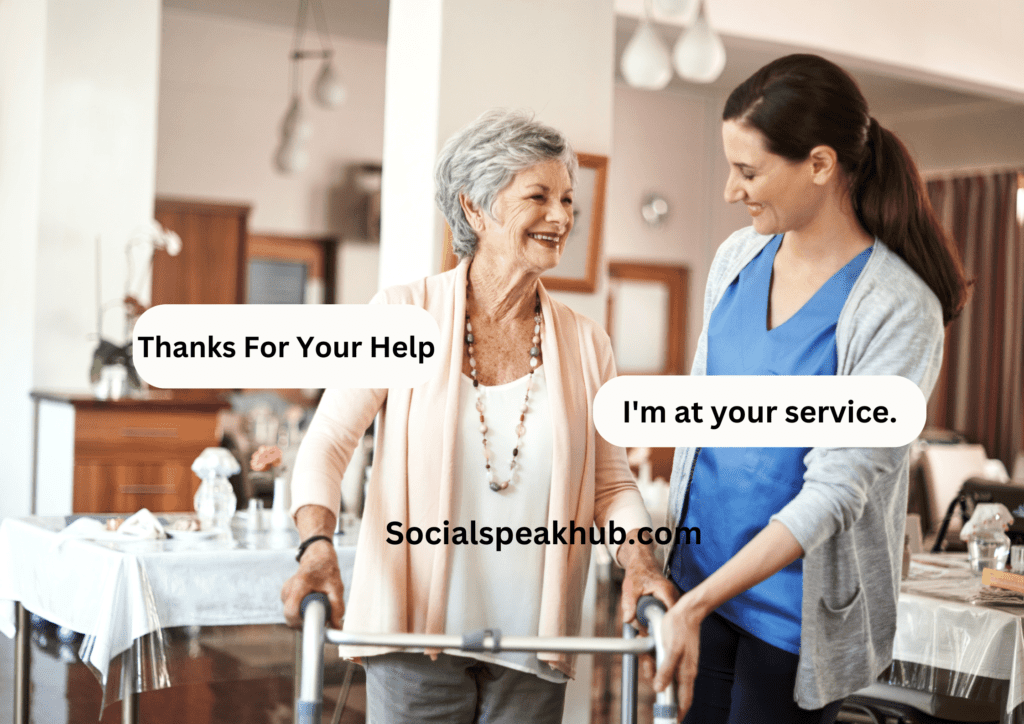
“I’m at your service” conveys a commitment to being available for further assistance. This phrase goes beyond a simple acknowledgment of thanks and emphasizes your readiness to help whenever needed. It communicates a sense of dedication and availability, suggesting that you are at the person’s disposal for any future assistance. Overall, it establishes a strong and supportive connection, letting the person know that you are committed to being a helpful resource whenever they require support.
19. I’m glad I could make a difference.
“I’m glad I could make a difference” showcases the impact of your assistance, emphasizing its meaningfulness. This response goes beyond a standard acknowledgment and conveys a sense of fulfillment in knowing that your help had a positive effect. It communicates that your intention was not just to assist but to contribute in a way that created a tangible difference. This phrase adds a personal and heartfelt touch to the exchange, expressing genuine happiness at having played a role in making a positive impact. Overall, it highlights the significance of your assistance and the positive change it brought about.
20. It’s all good!
“It’s all good!” infuses a casual and reassuring tone into your response. This phrase communicates that the assistance was no trouble at all, and everything is in a positive and easygoing state. It emphasizes a laid-back attitude, assuring the person expressing thanks that there’s no need for concern or excessive gratitude. Overall, it fosters a relaxed and comfortable atmosphere, suggesting that the interaction was smooth and uncomplicated.
21. I’m here whenever you need support.
“I’m here whenever you need support” extends an open invitation for future assistance, creating a sense of reliability. This response not only acknowledges the gratitude but also emphasizes your ongoing availability to provide support whenever it’s required. It establishes a connection of trust and reassurance, letting the person know that they can rely on you for assistance in the future. Overall, it communicates a commitment to being a dependable resource, reinforcing a sense of support and friendship.
22. It’s no big deal.
“It’s no big deal” minimizes the significance of the favor, making the person feel at ease. This phrase suggests that the assistance provided was not a major effort or inconvenience. It aims to downplay the favor, emphasizing that the person expressing gratitude shouldn’t feel overly obligated or concerned. This response reflects a casual and easygoing attitude, creating a comfortable and light-hearted atmosphere in the exchange. Overall, it communicates that the help extended was simple and not a significant matter, maintaining a relaxed and friendly tone.
23. You’re very welcome.
“You’re very welcome” is a gracious and polite response that reaffirms your willingness to help and expresses gratitude for their appreciation. This phrase goes beyond a simple acknowledgment and conveys a sense of warmth and openness. It emphasizes that the person’s thanks are genuinely appreciated and that you are more than happy to have been of assistance. Overall, it adds a touch of courtesy and sincerity to the exchange, creating a positive and appreciative atmosphere.
24. I’m glad I could assist you.

“I’m glad I could assist you” combines gratitude and satisfaction in a comprehensive response. This phrase not only acknowledges the thanks but also expresses your genuine happiness in being able to provide assistance. It conveys a sense of fulfillment and satisfaction in knowing that your help was valuable. Overall, it adds a personal and positive touch to the exchange, emphasizing both your appreciation for their thanks and your joy in being able to contribute positively.
25. It’s my pleasure to help out.
“It’s my pleasure to help out” ends on a positive note, reiterating the joy derived from providing assistance. This phrase conveys a sense of genuine pleasure and satisfaction in being able to help. It adds a personal touch to the acknowledgment of thanks, emphasizing that providing assistance was not only a duty but a source of happiness. Overall, it creates a warm and friendly atmosphere, letting the person know that your pleasure in helping is sincere and that you are happy to have been of service.
Conclusion
In conclusion, the art of responding to gratitude lies in balancing professionalism with a personal touch. Choose your responses based on the context and your relationship with the person expressing thanks. By incorporating these 25 responses into your communication toolkit, you’ll not only navigate social interactions with grace but also leave a lasting positive impression. Remember, a thoughtful response goes a long way in building and maintaining meaningful connections.
